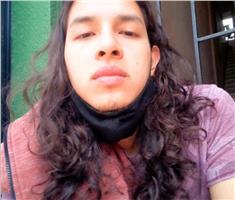
Sebastian
About me
The tutor wrote the presentation in another language View the original text
Las clases particulares adoptarán conceptos de la metodología Dalcroze y Kodaly en general, puesto que le doy mucha importancia a la rítmica más practicada, que se da a través del cuerpo, del ritmo corporal; pisadas, palmadas, para comprender el ritmo de una forma dinámica, práctica y natural. Asimismo, también le doy prioridad al desarrollo del oído musical ejecutando un repertorio ameno y/o conocido por el estudiante, para practicar la afinación a través del canto o basta con un tarareo bien entonado para practicar la afinación; esto permitirá una mejor comprensión de una escala en el instrumento que sea o en un solfeo. Con el instrumento, se empezará por conocer las partes y las funciones de cada una de ellas en el mismo instrumento. Luego, se enseñará distintas técnicas para la mejora de digitación, sonido y apertura de la mano (todo esto, progresivamente y de forma dinámica). A continuación, se comenzará con ejercicios para la digitación con La escala cromática, ya que solo será necesario moverse de un traste en uno. Todo esto dará comienzo a lo siguiente que es: ejercicios para arpegeos, lectura de tablatura, escalas (menor y mayor natural, pentatónica mayor y menor, blues, etcétera), improvisación ,Ejecución de acordes y tipos de Rasgueos, progresiones armónicas , REPERTORIO (le doy mucha importancia a los pedidos musicales que deseen aprender los propios alumnos). Cabe mencionar, que toda esta práctica se desarrollará simultáneamente con Teoría, empezando por Enseñanza de las notas naturales y su distancia entre ellas, figuras rítmicas, Cifrado Americano, Calidades de acordes, Armonía funcional (progresivamente), para comprender la práctica y así poder seguir avanzando. Y para finalizar, las clases son un diálogo entre alumno y profesor para poder acompañar al otro y practicar lo mismo que el otro Como si de un ensamble musical por entreteniendo se tratara.
The private classes will adopt concepts from the Dalcroze and Kodaly methodology in general, since I give a lot of importance to the most practiced rhythm, which occurs through the body, the body rhythm; footsteps, claps, to understand the rhythm in a dynamic, practical and natural way. Likewise, I also give priority to the development of the musical ear by performing a repertoire that is enjoyable and/or known to the student, to practice tuning through singing or well-toned humming is enough to practice tuning; This will allow a better understanding of a scale on whatever instrument or in a solfeggio. With the instrument, you will begin by knowing the parts and the functions of each of them in the same instrument. Then, different techniques will be taught to improve fingering, sound and opening of the hand (all this, progressively and dynamically). Next, we will begin with exercises for fingering with the chromatic scale, since it will only be necessary to move from one fret to one. All of this will begin the following, which is: exercises for arpegeos, reading tablature, scales (natural minor and major, major and minor pentatonic, blues, etc.), improvisation, execution of chords and types of strumming, harmonic progressions, REPERTOIRE ( I give a lot of importance to the musical requests that the students themselves want to learn).
It is worth mentioning that all this practice will be developed simultaneously with Theory, starting with Teaching natural notes and their distance between them, rhythmic figures, American Cipher, Chord Qualities, Functional Harmony (progressively), to understand the practice and thus be able to continue going forward. And finally, the classes are a dialogue between student and teacher to be able to accompany the other and practice the same as the other, as if it were a musical ensemble for entertainment.
Availability
Choose a date and time to start booking your class.
Times are displayed in your local time zone.
Can't find the availability that suits your needs?
I teach
-
Guitar Beginner, Intermediate, Advanced
-
Music Beginner, Intermediate, Advanced
Languages I speak
Education
Estudios De La Carrera De Música En La Upc
Degree - B.A.
Other things I like

